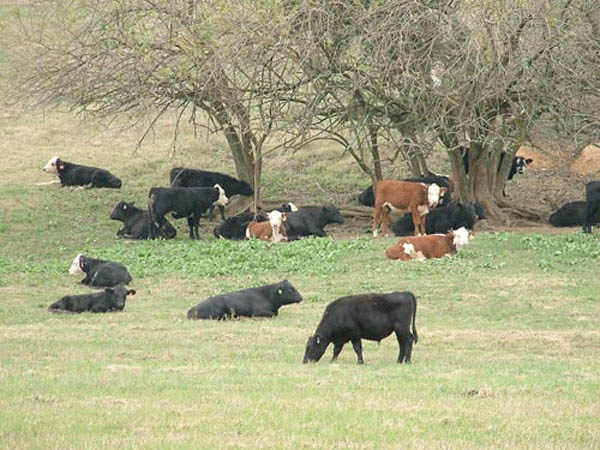January 7, 2011

Soil degradation is a common result of decades of field plowing and often the depleted land reverts back to forests and pastures. The soil in these discarded plots is robbed of nutrients and organic matter.
A study funded by the USDA – Agriculture Research Service has tested cattle grazing on degraded soil to determine if the activity would have any effect on restoring depleted nutrients. During a 12 year period, 18 paddocks were used to monitor the soils response to different land management practices. In the end, the paddocks with medium to heavy grazing proved to be the best way to sequester nitrogen and carbon in the soil. Nitrogen and carbon soil sequestration improve soil fertility and reduces the emissions of greenhouse gases.
“Land owners need guidance on whether keeping the land unused is the best way to restore degraded soils or whether allowing cattle to graze on it is a viable option,” says Alan Franzluebbers, the author of the study and an ecologist with the USDA-Agricultural Research Service at the J. Phil Campbell Sr. Natural Resource Conservation Center in Watkinsville, GA.
Franzluebbers and his team of researchers used four different management techniques to arrive at their conclusion. Paddocks were either moderately grazed, averaging 5.8 steers per hectare; heavily grazed, with 87 steers per hectare; not grazed, but the grass was cut and used for hay; or not grazed or harvested.
Land that was unused and not harvested had the highest surface residue accumulation, which is essential to prevent erosion, but it did not sequester carbon and nitrogen as well as grazing. Land that was not grazed but harvested for hay resulted in little nutrient retention and was prone to erosion.
In recent years, the sentiment has been that letting land go unused was more environmentally responsible than having cattle graze on it. Franzluebbers evidence discredits this assumption.
“From an environmental standpoint, grazing has traditionally been viewed as less desirable than leaving the land unused. However these results demonstrate that if producers allow cattle to moderately graze pastures, they’ll be restoring soil quality and cutting greenhouse gases by keeping carbon in the soil as organic matter rather than releasing it into the atmosphere as carbon dioxide,” he says.
The study is available in the November/December 2010 issue ofSoil Science Society of America Journal.
The full article is available for no charge for 30 days following the date of this summary. View the abstract at https://www.soils.org/publications/sssaj/abstracts/74/2/347.
You May Also Like




